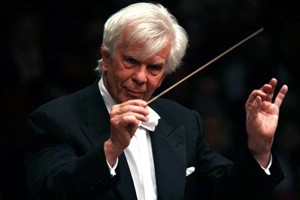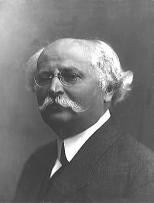
Samuil Aleksandrovich Stolerman (Stolerman, Samuil) |
Stollerman, Samuel
Honored Artist of the Georgian SSR (1924), People’s Artist of the Ukrainian SSR (1937). The name of this artist is inextricably linked with the flourishing of the musical theater of several republics. The indefatigable energy and ability to comprehend the nature and style of national musical cultures made him a wonderful companion of the composers of Georgia, Armenia, Azerbaijan, Ukraine, who gave stage life to many works.
In an unusual way, the son of a poor tailor, who was born in the Far Eastern town of Kyakhta, came to the conductor’s profession. In early childhood, he knew hard work, need and deprivation. But one day, having heard the play of a blind violinist, the young man felt that his vocation was in music. He walked hundreds of kilometers on foot – to Irkutsk – and managed to enter the military brass band, where he served for eight years. In the mid-90s, Stolerman first tried his hand as a conductor at the podium of a string orchestra in a drama theatre. After that, he worked in an itinerant operetta troupe, and then began to conduct operas as well.
In 1905, Stolerman first came to Moscow. V. Safonov drew attention to him, who helped the young musician get a place as a conductor in the theater of the People’s House. Having staged “Ruslan” and “The Tsar’s Bride” here, Stolerman received an offer to go to Krasnoyarsk and lead a symphony orchestra there.
Stolerman’s activity unfolded with extraordinary intensity after the revolution. Working in the theaters of Tiflis and Baku and then, heading the opera houses of Odessa (1927-1944) and Kyiv (1944-1949), he does not break ties with the republics of Transcaucasia, giving concerts everywhere. With extraordinary energy, the artist takes on the production of new operas that mark the birth of national musical cultures. In Tbilisi, under his direction, for the first time saw the light of the ramp “The Legend of Shota Rustaveli” by D. Arakishvili, “Insidious Tamara” by M. Balanchivadze, “Keto and Kote” and “Leila” by V. Dolidze in 1919-1926. In Baku, he staged the operas Arshin Mal Alan and Shah Senem. In Ukraine, with his participation, the premieres of the operas Taras Bulba by Lysenko (in a new edition), The Rupture by Femilidi, The Golden Hoop (Zakhar Berkut) by Lyatoshinsky, Captive by the Apple Trees by Chishko, and Tragedy Night by Dankevich took place. One of Stolerman’s favorite operas is Spendiarov’s Almast: in 1930 he staged it for the first time in Odessa, in Ukrainian; two years later, in Georgia, and finally, in 19, he conducted in Yerevan at the first performance of the opera on the opening day of the first opera house in Armenia. Along with this huge work, Stolerman regularly staged classical operas: Lohengrin, The Barber of Seville, Aida, Boris Godunov, The Tsar’s Bride, May Night, Ivan Susanin, The Queen of Spades and other. All this convincingly testifies to the breadth of the artist’s creative interests.
L. Grigoriev, J. Platek





